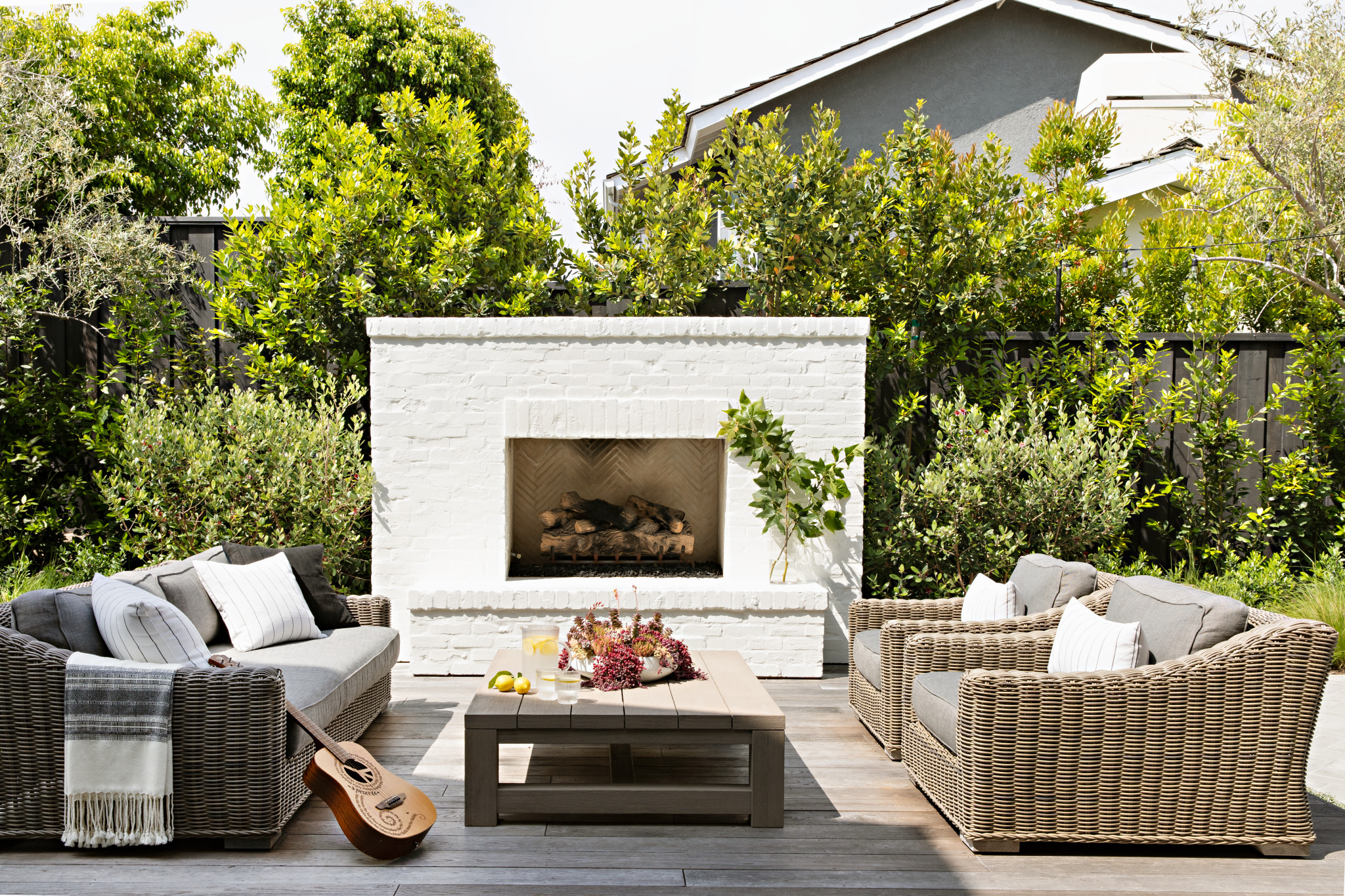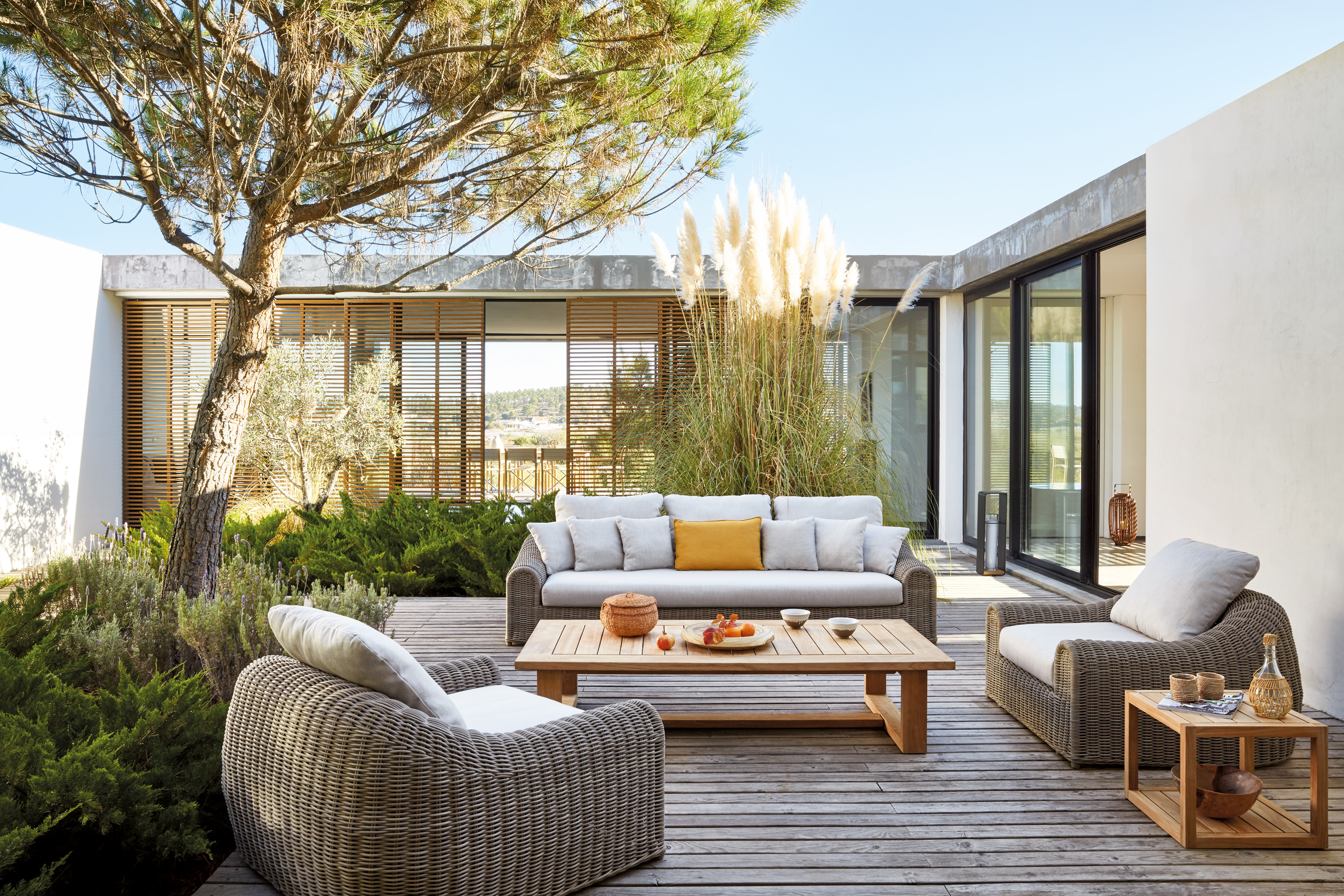What type of patio furniture can I leave outside in winter? The best materials to buy now that you won't regret later
You might be buying furniture now to enjoy in the sun, but have you considered whether it will hold up to being outside the rest of the year round?


While your patio furniture may not be used as much in the fall or winter months, you still need to ensure it is well taken care of, to ensure it lasts until next season at least. By leaving it completely unattended and by not winterizing the pieces properly, your precious dining or lounge sets could get damaged. This is because many furniture materials aren’t meant to go through the freezing and thawing, along with snow, sleet, and rain, that comes with winter.
To help you understand what type of furniture can last longer and how to take care of it, we spoke to top designers for advice. Pay heed to these key suggestions and ensure your backyard and patio furniture is always in peak condition for years to come.
What patio furniture can be left outside in the winter?

If you spend a lot of your time in your outdoors during spring and summer, you must invest in quality modern outdoor furniture so it can last you year after year. Purchasing well-designed and thought-out furniture with durable materials also means you can relax, and don't need to dedicate too much time to maintaining or restoring them. Whether you have a patio, balcony, or backyard, your outdoor living room setup has the potential to last 5 to 10 years down the road.
'When it comes to outdoor furniture, certain materials are more durable and require less maintenance than others,' says Kashi Shikunova, director of Yam Studios. 'While high-quality teak or cedar wood can withstand outdoor conditions relatively well, they still need regular attention to maintain their appearance and durability. On the other hand, aluminum or concrete is generally more resistant to damage from exterior elements. Items such as tables, which don't have upholstery, can typically be left outdoors for long periods without significant concerns.'
For your wooden furniture, remember to add a weather sealant to the piece and an all-weather varnish to help keep it resistant to weather and UV rays. Also remember to sand the old varnish off, especially when it begins to peel or becomes yellow.
Make your outdoor furniture last long with this waterproofing wood stain that offers long-lasting UV protection and helps maintain the integrity and beauty of wood in variable outdoor conditions.
What type of patio furniture is the most weather resistant?

'Powder-coated aluminum furniture is renowned for its exceptional durability, making it an ideal choice for outdoor settings,' says Kashi. 'Unlike wood, which requires protection from the elements and regular upkeep, powder-coated aluminum can withstand the challenges posed by winter and wet environments. Its resilient nature ensures that it remains intact and unaffected by moisture. However, when it comes to upholstery, it is always advisable to store it away, even if you are using outdoor fabrics. Prolonged exposure to the elements can lead to the development of stains and other undesirable effects.'
Aluminium aside, concrete too is a great exterior furniture piece that can be left outside in the winter without risking damage. The material is resistant to scratching, chipping or cracking. Using concrete furniture is a big outdoor furniture trend at the moment.
The Livingetc newsletters are your inside source for what’s shaping interiors now - and what’s next. Discover trend forecasts, smart style ideas, and curated shopping inspiration that brings design to life. Subscribe today and stay ahead of the curve.
Teak wood is great for places that experience extremely hot summer days and cold, wet winter months. The furniture is usually finished in natural oils that make it resistant to water damage, warping, rotting, cracking, or weakening. And so, the furniture will stand strong through severe winter storms, heavy winds, and freezing temperatures.
Acacia outdoor dining armchair, Wayfair
Make your patio a comfortable spot with these wooden armchairs that can survive all weather conditions, and can be placed in the backyard, patio, deck, or porch.
How can you keep furniture protected from the elements?

Move all your outdoor dining and living room furniture to a safe place during the harsh winter months.
'Taking care of your patio furniture in the winter is an important step in prolonging the life of these purchases,' says Julia Mack, founder of Julia Mack Design. 'Select a dry location in your cellar, garage, or patio and cover your pieces with either nylon or plastic – be certain to not bind the covering too tightly around each piece. Ideally, leave some breathing room around each piece, especially if your furniture frames are constructed of wood or composite wood and your cushions are a composite foam core. If your storage space is susceptible to climate and humidity fluctuations, your furniture may warp or become moldy, making springtime cleanup a long process, so store your pieces carefully and check on them occasionally throughout the winter months.'
'Covers protect against adverse weather conditions, including rain and UV rays, which can cause damage over time,' says Kashi. 'It's especially beneficial to have a waterproof storage box for cushions and upholstery items. Storing them away during the winter months helps to safeguard them from moisture and potential stains, ensuring they remain in excellent condition for future use.'
What furniture should you not keep in the outdoors?

Amongst the many pieces that should not be left outside in the winter is wicker, as water can easily penetrate it, and when that water freezes, it expands, breaking the furniture piece. Your best bet is to cover this type of furniture and put it into storage.
Another furniture material that shouldn't be used in a large or small modern patio is steel. Furniture made in this cannot be left outside all winter long, as harsh snow and sleet can scratch its surface. If you paint over it, the cold conditions can cause the paint to crack, and water that gets within those cracks can cause rust.
Glass-topped tables should also be moved inside during the winter. This delicate material does not stand up well against the weather and can break easily.

Aditi Sharma Maheshwari started her career at The Address (The Times of India), a tabloid on interiors and art. She wrote profiles of Indian artists, designers, and architects, and covered inspiring houses and commercial properties. After four years, she moved to ELLE DECOR as a senior features writer, where she contributed to the magazine and website, and also worked alongside the events team on India Design ID — the brand’s 10-day, annual design show. She wrote across topics: from designer interviews, and house tours, to new product launches, shopping pages, and reviews. After three years, she was hired as the senior editor at Houzz. The website content focused on practical advice on decorating the home and making design feel more approachable. She created fresh series on budget buys, design hacks, and DIYs, all backed with expert advice. Equipped with sizable knowledge of the industry and with a good network, she moved to Architectural Digest (Conde Nast) as the digital editor. The publication's focus was on high-end design, and her content highlighted A-listers, starchitects, and high-concept products, all customized for an audience that loves and invests in luxury. After a two-year stint, she moved to the UK and was hired at Livingetc as a design editor. She now freelances for a variety of interiors publications.

